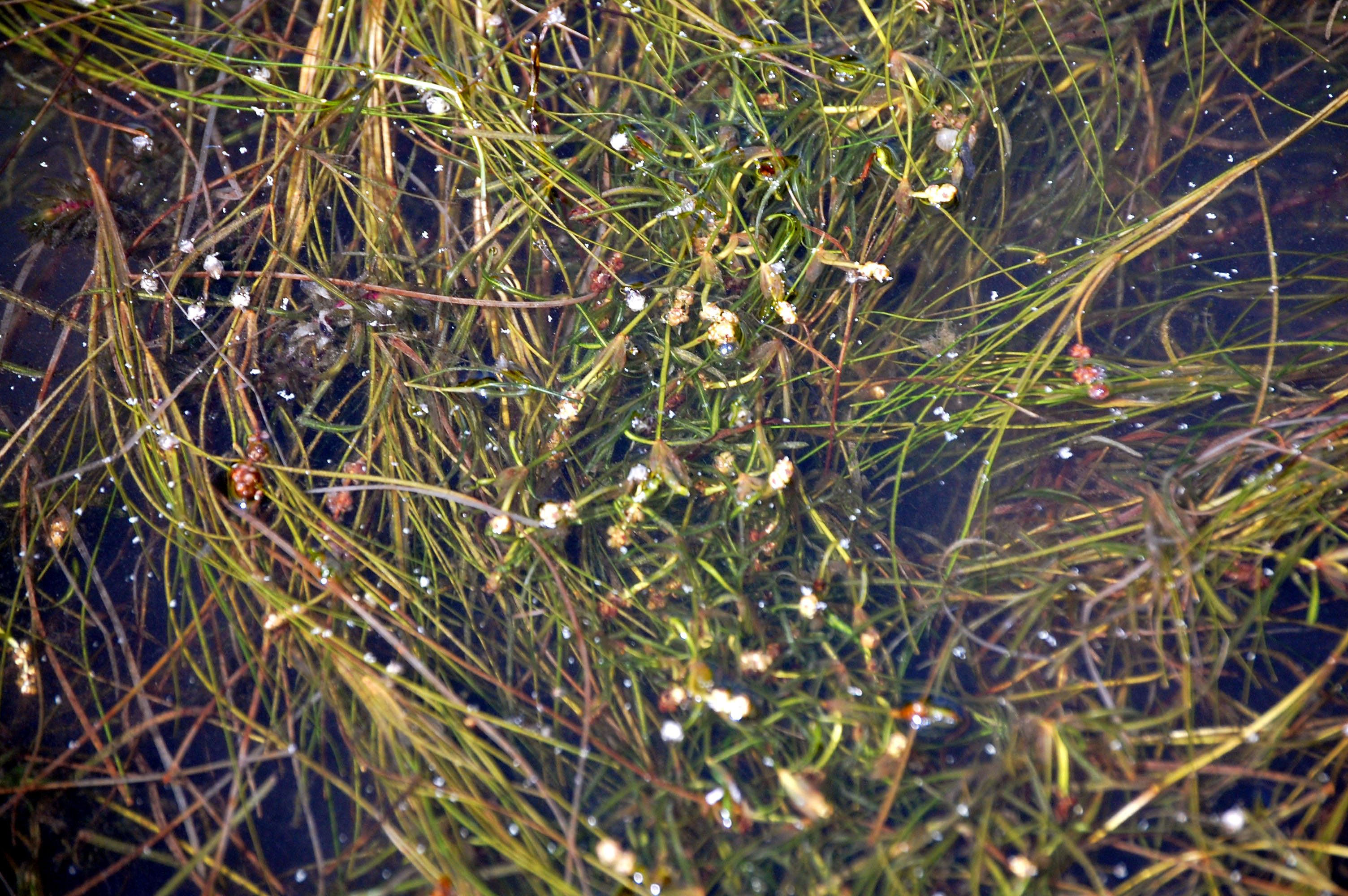Small Pondweed
(Potamogeton pusillus)

Description
Lesser pondweed is a superficially grasslike herb producing a very slender, branching, somewhat compressed stem, usually less than 70 cm but occasionally up to one metre in length. Nodal glands, if present, are generally poorly developed. The leaves are narrow and linear, translucent, mid or olive green, usually 20-50 mm long - 0.8-1.4 mm wide, but rarely up to 100 mm long and 1.9 mm wide. The midrib often lacks lacunae (transparent areas either side of the midrib) either side of it, and if present, lacunae are restricted to the lower half of the leaf. There are no floating leaves. The stipules are tubular when young, but tend to split with age.Turions are produced, often in large quantities. In early autumn the entire plant disintegrates into a mass of turions, which act as a means of propagation and as an overwintering mechanism.The inflorescence is a spike of 3-6 flowers arranged in interrupted whorls.Like most fine-leaved pondweeds, Potamogeton pusillus is diploid, with 2n=26.Lesser pondweed can be difficult to distinguish reliably from other fine-leaved pondweeds, especially P. berchtoldii. Hybrids are recorded with Potamogeton octandrus (P. - apertus Miki), P. polygonus (P. - attenuatus Hagstr.), P. obtusifolius (P. - saxonicus Hagstr.), P. trichoides (P. - grovesii Dandy & G.Taylor), P. berchtoldii (P. - mucronulatus (G.Fisch.) Papch.), P. oxyphyllus (P. - orientalis Hagstr.)
Taxonomic tree:







